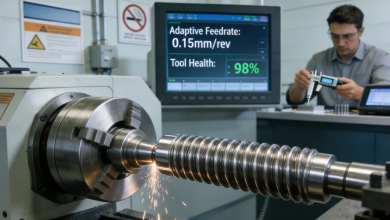The past two years have been incredibly challenging for UK manufacturers. Aside from the pandemic, they’ve had to navigate Brexit, major supply chain disruptions, rising prices, and growing skills shortages.
In that environment, standing out on price and product alone (already difficult prior to the pandemic) is almost impossible. The imperative therefore is to focus on customer experience. The benefits of doing so are manifold. Organisations that focus on customer experience see lower levels of customer churn, increased sales, and lower service costs.
That’s something that doesn’t always come easily to organisations in the business-to-business (B2B) space, especially manufacturers. In fact, a report from McKinsey & Company found that while the typical business to consumer (B2C) organisation scores between 65% and 85% on customer experience, the average score for B2B companies was less than 50%. Given that B2B clients are regular consumers in their everyday lives, they’re certain to have noticed that disconnect.
Manufacturers who can close that gap are therefore well placed to gain ground on their competitors. While there are a number of things manufacturers can do when it comes to fostering a customer-first mindset, embracing digitalisation is one of the most important.
An organisation-wide effort
Before digging into how manufacturers can use digitalisation to the benefit of their customers, it’s worth pointing two things out. The first is that digitalisation is an organisation-wide effort that requires buy-in from everyone. Any initiative should therefore involve project managers, team leaders, and department heads as well as senior management.
Importantly, people who are lower in the organisation hierarchy can still play a vital role in setting the course for their company’s digital success: by facilitating and leading the development of a strategy and then having it approved by the board or management.
Digital transformation is not purely technology-related, either. Every digital strategy is positioned at the intersection of technology, organisation, and people. It’s this intersection that creates experiences and these experiences have to form the core of your strategy. Considering the huge variety of experiences, it’s essential to merge them into one uniform user experience.
The second thing to note is that digitalisation is an ongoing process, rather than a “once-and-done” kind of deal. Organisations will find themselves at varying levels of digital maturity and some may have some catching up to do. This needs to be taken into account because those digital experiences that customers already take for granted should simply be implemented with a “just do it” attitude.
The complexities of manufacturing CX
It’s also worth pointing out that CX in the manufacturing space comes with its own complexities. Business models that have been developed over decades are based on unique interactions between a wide range of partners and departments, users and technological advancements, and, in some cases, on sophisticated certifications.
Any digitalisation initiative has to bear these complexities and relationships in mind. Customer satisfaction throughout the entire life cycle is a key success factor for a B2B manufacturer. This makes it even more important than a digital strategy to be set up as a team effort. It won’t be enough to develop a marketing strategy, a sales strategy and a service strategy for your digital business. Doing so might even prove counterproductive. This is why you need to consider all your experiences within the company. The easiest way to do this is by regularly discussing and
then improving experiences with different departments.
A consistent experience
Ultimately, the goal should be to create consistent experiences no matter which part of your organisation the client’s dealing with. Crucial to providing that consistency is breaking down the silos within an organisation. That in turn entails being able to draw on a large number of data sources and software components.
Here, a digital experience platform (DXP) can be invaluable for an organisation. DXPs connect disparate data sources into one user experience – for example, a web portal or mobile app
Ideally, a DXP shouldn’t just connect disparate sources of data, but also scale with you and be suitable for you as a B2B manufacturer.
A serious imperative
Today’s manufacturing customer doesn’t just expect digital experiences that are on par with the ones they get as consumers, but they are also looking for a business to understand their digital needs. It’s therefore imperative that manufacturers deliver effortless digital experiences that customers and business partners can’t walk away from.
By continually focusing on digitalisation, manufacturers can go a long way to ensuring that they thrive going forward.




